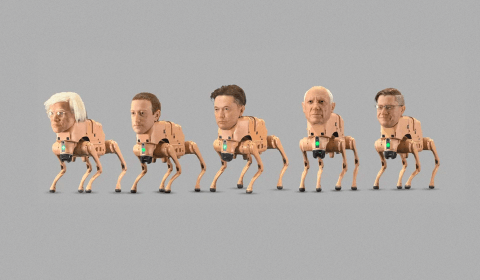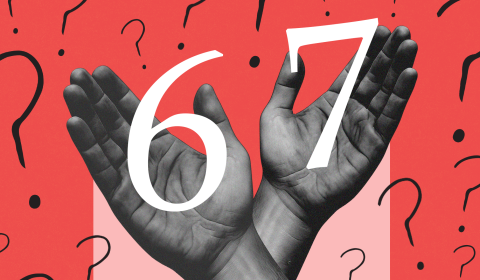Are we so obsessed with watching other people document their creativity for profit that we’re unable to separate our own creativity from capitalism?
Crochet has gone through several evolutions since its (debated) origins in Europe.
It is widely agreed that Chinese craftsmen introduced a needlework style known as tambouring to the French in the late 1700s.
The first mention of crochet was in Dutch magazine Penélopé in the 1800s, and it was later popularised by Eleanore Riego de la Branchardière, who was otherwise known as the Grandmother of crochet.
The art of crochet wasn’t just popular amongst the upper and middle classes as it had been in France.
Not only was it revered as a cheaper alternative to lace, but it was also seen as a way for women to earn their independence by selling crocheted items (to the likes of Queen Victoria, even!) in order to assist their families.
At the time of the Irish Potato Famine, for instance, when work was more difficult for men to find, crochet became known as a kind of quiet activism.
Most recently, crochet saw a resurgence – especially amongst young people – during the Covid pandemic.
This was certainly aided by the switch from complicated pattern images to simplified YouTube or TikTok tutorials which allowed people to crochet along.
Many people used the downtime offered during the pandemic to begin their own crochet business, selling their creations or patterns to make money when work was unavailable.
While this became a necessary means of earning a living for many, I can’t help but be reminded of German philosopher and sociologist Herbert Marcuse, who coined the term ‘repressive desublimation’ in his 1964 book One-Dimensional Man.
Marcuse used this phase to describe how the repression of certain desires led to their expression in commodified form, creating a one-dimensional society whereby the pleasure principle is consumed by the performance principle.
Ultimately, people end up working for the benefit of others rather than themselves.
One of the most popular examples of this is sexual desire expressed in purchasable pornography – particularly for desires deemed “uncouth” or “taboo”.
That is to say, people justify a desire to crochet by the ability to sell or post content about their creations, rather than just enjoying the process – and the end result – without it having to be “worth” a certain type of capital.

The boom in granny squares during the pandemic arguably emphasised crochet as an anti-capitalist movement: without the ability to work, people had more time to create.
Thanks to the government’s furlough scheme, many more of us were able to become, or at least pretend we were, what Thorstein Veblen called the ‘Leisure Class’.
He used this term to refer to people who not only didn’t work, but could demonstrate the time they spent not working by visibly participating in other activities such shopping (conspicuous consumption) or promenading.
In this sense, we might argue that the demonstration of crafts like crochet on social media has made content creators resemble this “leisure class” without even having to leave their houses.
@allfromjade Love this audio! 🥰 I could record myself crocheting all day long, but as weird as it may seems, this takes me so much time and energy to stop, record, stop, crochet, stop, record… so many times! But at the same time, I want you to be able to see me crocheting and working on new designs! 🧶 How to you feel about making of? Have you recorded some already? #crochetmaker #crochetbusiness #filmingart #crochetmakingof #amigurumimaker #crochetturtlepizza #turtlepizza #crochetfood #crochetturtle #seaturtle #turtleplush #turtletoy #crochetplush #chenilleyarn #makeitpremier #premieryarns #parfaitchunkyyarn #amigurumiturtle #BTS #crochetbusiness
It goes without saying that the boom in crocheting constitutes just one relatively privileged experience of the pandemic.
For many, such as those working on the front line, or those who were isolated from or lost loved ones, the story was very different.
Nevertheless, lockdown searches for crochet skyrocketed by 155% on Pinterest alone and craft supply store Hobbycraft saw a 200% increase in sales in the first six months of the pandemic.
On the one hand, we could see this compulsion to crochet as a similarly domesticated relative to the Trad wife (satire or not). This trend is seen as an antithetical stance to the infamous Girl Boss.
The trad-wife rejects cut-throat career moves and fast-paced living in exchange for bread-making and traditional gender dynamics.
But if crochet could be seen as a craftivist movement back in the 1800s, then what’s stopping it from becoming one again?
In a word: capitalism.
Since the end of the pandemic, it seems like any illusion that the global population may have learned something from our period of confinement has long been forgotten.
Admittedly, sustainability and slow-fashion – two things firmly stitched to crochet culture – are seeing a new heyday thanks to concerns around the impending doom of our environment, as well as the inhumane continuation of sweatshop conditions to produce fast-fashion items.
Likewise, many companies have switched to hybrid or work-from-home models to help their employees find a better work-life balance.
@poppyluclothing Just wish I could rescue them all… #thriftflip #sustainablefashion #slowfashion #upcycledfashion #sewing #customclothing #thriftstorefind #crochet #quilting
♬ California Dreamin’ – With Cass Elliot And John Phillips Intro – The Mamas & The Papas
That being said, the minimum wage job market continues to dig its claws into people who have no other choice, and the UK government’s recent proposal to give weight loss jabs to unemployed Brits is enough to demonstrate that the economy is still prioritised above the health and wellbeing of actual people.
Nevertheless, the obsession with crochet prospers, demonstrated by the offering of more than 160 million posts on TikTok still today.
Whilst many of us may no longer find we have the time to create – be it for fun, your mental health, or whatever reason you find for stitching a few rows – the innate aspiration to be able to enjoy leisure time has remained.
@imhelenzhou Crochet, all day👏👏👏 #fypシ #foryou #4u #crochet #crochetallday #crochetersoftiktok
Instead of actually picking up the yarn ourselves, we numb our brains by watching countless videos of others doing what we can’t bring ourselves to.
Like watching trad wives make cereal from scratch while we munch on a bowl of cornflakes we’re calling ‘girl dinner’, or watching a fitness video as if it were a movie rather than another source of our slovenly shame, once again the necessity of surviving within a system in which “capitalism is the air we breathe” is denying us the time and the motivation to create just for the sheer joy of it.
If we can begin again to use crochet to make art, like Su Richardson’s ‘Burnt Breakfast’, rather than recording ourselves making our husband’s breakfasts or launching crochet enterprises, then perhaps crochet can once again become a form of activism to be enjoyed rather than sold.

















